Pellaea rotundifolia is a beautiful little fern that’s surprisingly easy to care for.
The delicate, button-shaped leaves along the lengths of its fronds are a wonderful way to soften up an area, and the deep forest greens are sure to add a touch of class.
Plus, as one of the few truly compact fern species – maxing out at around 15 inches tall – it’s a perfect fit for terrariums and small windowsills.
What’s not to love?
Find out how to get the best foliage from this elegant fern and where to find it.
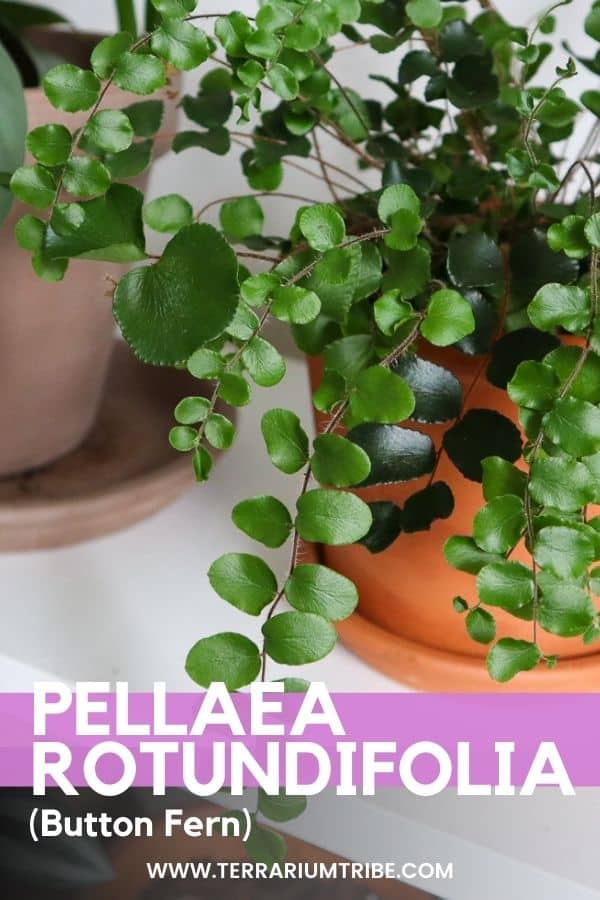
What is the Button Fern? (& What Makes it Special?)
Native to New Zealand, Pellaea rotundifolia is a versatile fern.
With an uncharacteristic tolerance for low moisture, temperature, and humidity (especially for a fern), the Button Fern is going to do well in most home settings.
But, that doesn’t mean they don’t love all the things a typical fern does.
What really makes the Button Fern so special is its signature foliage – and here, the clue is in the name. With rotundifolia meaning “round” and Pellaea “dark”.
Displaying a variety of lush greens, the leaves darken over time from a pale to dark forest green. Mature plants will often be much darker than their juvenile counterparts. Or, it could reference the natural red stem development.
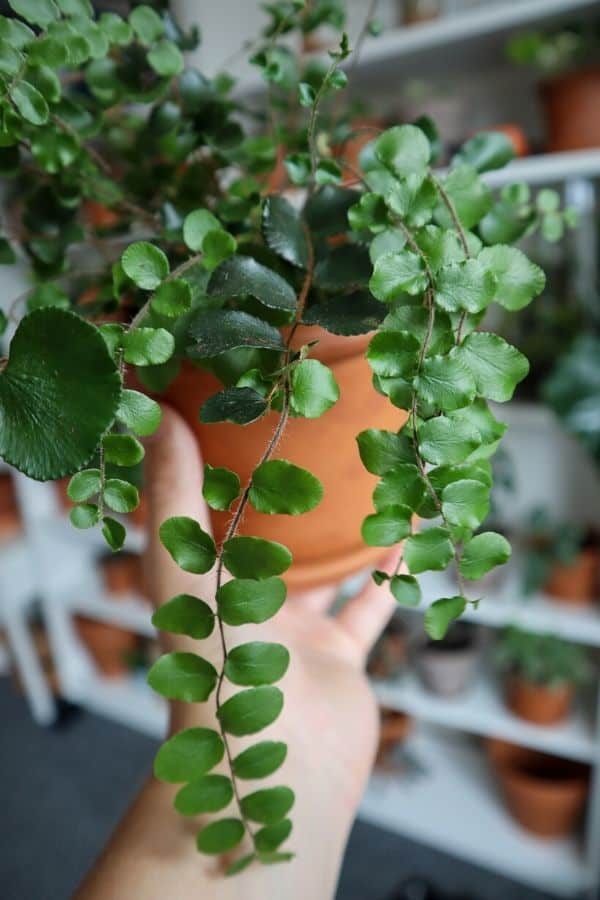
Pellaea rotundifolia also goes by a couple of other common names, the fitting “Round-Leafed Fern” and the whole genus are sometimes known as “Cliff Brakes” for their ability to grow on rocks.
Told you they were tough!
Where to Buy the Button Fern
See the links below to purchase from reputable terrarium plant shops and marketplaces (may include affiliate links).
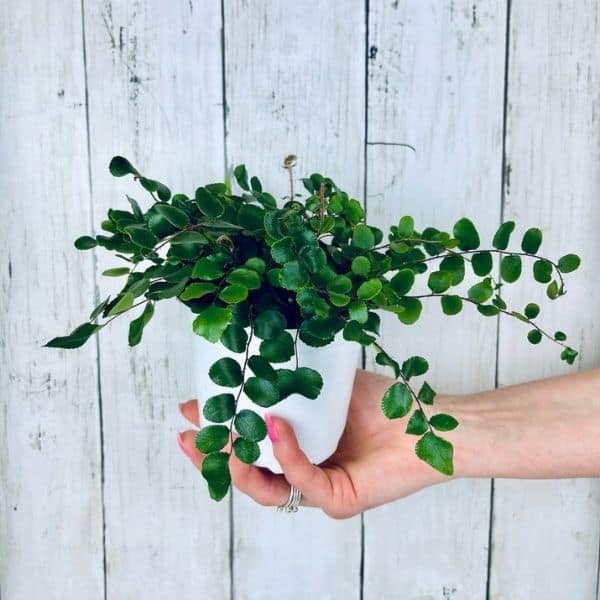
Button Fern Care & Growth
At a Glance
| Plant Type | Fern |
| Lighting | Medium – high indirect light |
| Temperature | 65-80°F (18-26°C) |
| Watering | Light, even moisture |
| Humidity | High humidity (60-90%) |
| Growth | 10-15 inches |
Lighting
As with most ferns, the Button Fern will do best with bright, indirect lighting.
Though the darker leaves indicate that it’s able to handle lower light levels – because they have a higher concentration of chlorophyll – you’ll want to maximize brightness if you want that vibrant foliage to thrive.
North-facing windows are a safe option, providing a full day of indirect light. Or, East-facing would be the next best with mostly indirect light and some soft morning direct light.
That being said, I keep mine on a set of shelves near a South-facing window.
Close enough to make the most of the bright light (the bay window gets a tonne of light) but far enough away that it’s never going to experience full Sun.
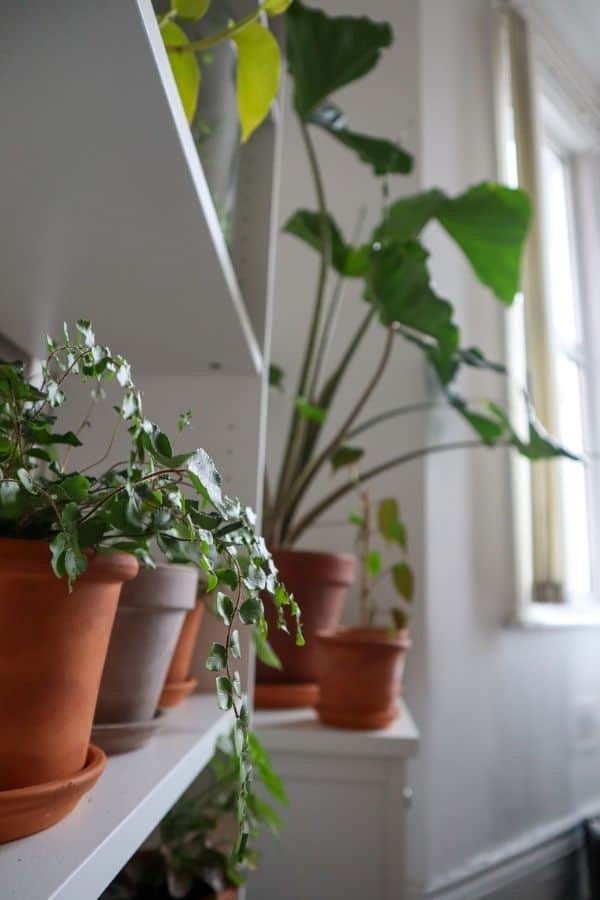
For reference, this spot tends to be between 150-250 footcandles depending on the day. It was a bit gloomy when I took this reading of 169.
This is enough for most houseplants to manage in just fine and more than enough for a fern like this.
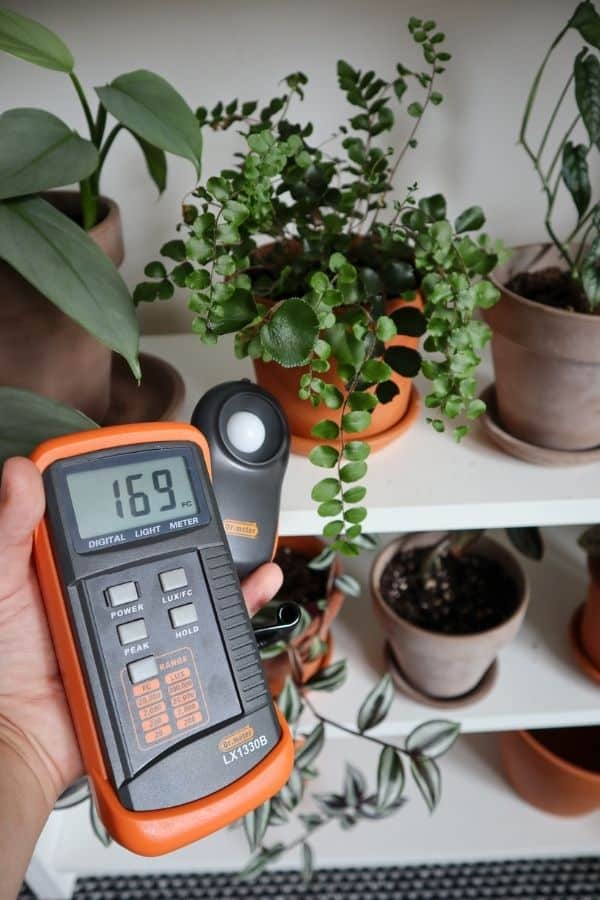
Though the “Cliff Brake” name suggests they can grow quite high and would likely experience some direct full sunlight in the wild, I would avoid it in the home.
I’m sure the delicate foliage would quickly scorch.
Watering
For a fern, Pellaea rotundifolia has surprisingly light watering requirements.
It’ll still appreciate regular moisture, but it’s not nearly as demanding as many other fern species. In fact, it’ll rapidly deteriorate if oversaturated.
Soggy soils are a big no for this plant.
- In the pot, the easiest way to prevent root rot and to make your whole life easier is to simply use a pot with a drainage hole.
- In a terrarium, you’ll want to pair with other drought-tolerant plants and try to achieve a water balance with minimal moisture in the system, i.e., a regular condensation pattern but a lightly moist substrate.
Substrate / Soil
Selecting a substrate with solid drainage is the key to balancing the water requirements of the Button Fern with its dislike of waterlogged soil.
Instead of your typical potting mix/houseplant soil mix, I’d opt for a coco coir and earthworm casting base (for excellent water retention), plus extra drainage additives.
👉 If in doubt, our tropical substrate mix is a well-balanced option.
You don’t really want the chunkiness of an aroid mix, but you do want to maximize drainage. So, horticultural sand is a good option for ferns to provide even drainage throughout, or pumice can work well too.
Temperature & Humidity
From my research, this Pellaea rotundifolia is supposed to be this hardy fern (that can even survive outside in some temperate areas) but my Button Fern is thriving in the warm and humid environment of my growing room/office.
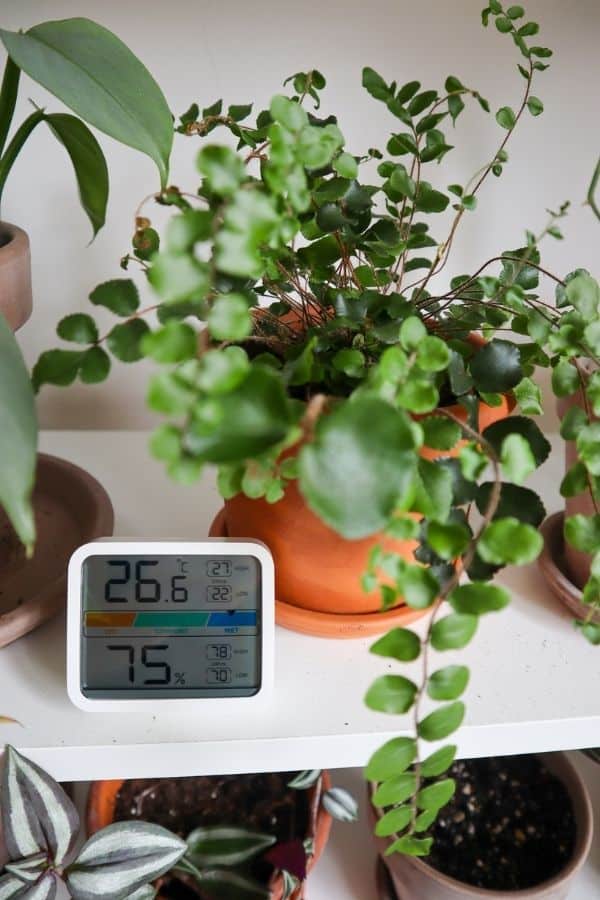
As you can see from the meter in the photo, we’re growing this plant in pretty tropical conditions.
Though this was taken in the summer, it is a UK summer… and we tend to run a pretty warm house anyway. The humidity is always high thanks to the density of plants (we don’t even run a humidifier, and it’s always around 75%).
If you pop this plant in a terrarium it’ll absolutely love it, though it still probably won’t grow much bigger…
Growth
The Button Fern is a relatively slow grower and remains a very compact plant even when mature.
Making this one of the best fern options for terrariums.
You’re unlikely to need to trim it down much, if at all. Plus, the fronds have a slight arching growth pattern, which makes them great for planting in a higher spot in a terrarium.
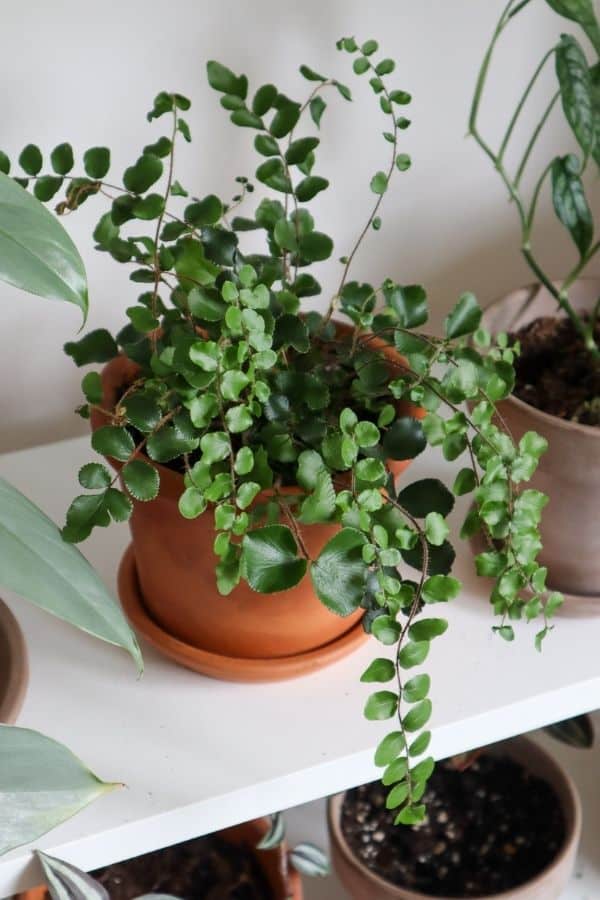
You’ll notice the larger leaves get rounder as well as darker, the largest of which on my plant form a lovely little bow tie.
Propagation
As with other types of ferns, propagating the Button Fern through division is the easiest (and pretty much only viable) method.
This involves separating the mature parent plant into smaller plants manually.
Sometimes, it’s as easy as gently teasing apart a root ball, but Pellaea rotundifolia grows along a creeping rhizome, so you’ll need a sharp knife to cut it.
As long as each rhizome division has a handful of fronds and a healthy root system, they should easily settle when re-planted separately into the substrate.
Varieties & Similar Plants
As far as I can tell, Pellaea rotundifolia appears to be the only commercially available variety in the genus.
Though there are other Pellaea species native to Australia and New Zealand, such as Pellaea falcata which is called the sickle fern for its long, sickle-shaped pinnae.
Just don’t get this plant confused with the Lemon Button Fern (Nephrolepis cordifolia ‘Duffii’). It seems to happen all the time due to their long fronds and button-shaped leaves, but they’re very different ferns.
Frequently Asked Questions
Button Ferns like to be consistently evenly moist, so you should water them whenever the top layer of the soil is dry to the touch.
The Button Fern is non-toxic to cats and dogs.
Misting Button Ferns can provide a temporary boost to humidity, which they will appreciate, but you’re better off boosting the ambient humidity of the room.
The Button Fern can live outside in hot and humid environments, like USDA growing zones 9, 10, and 11.
